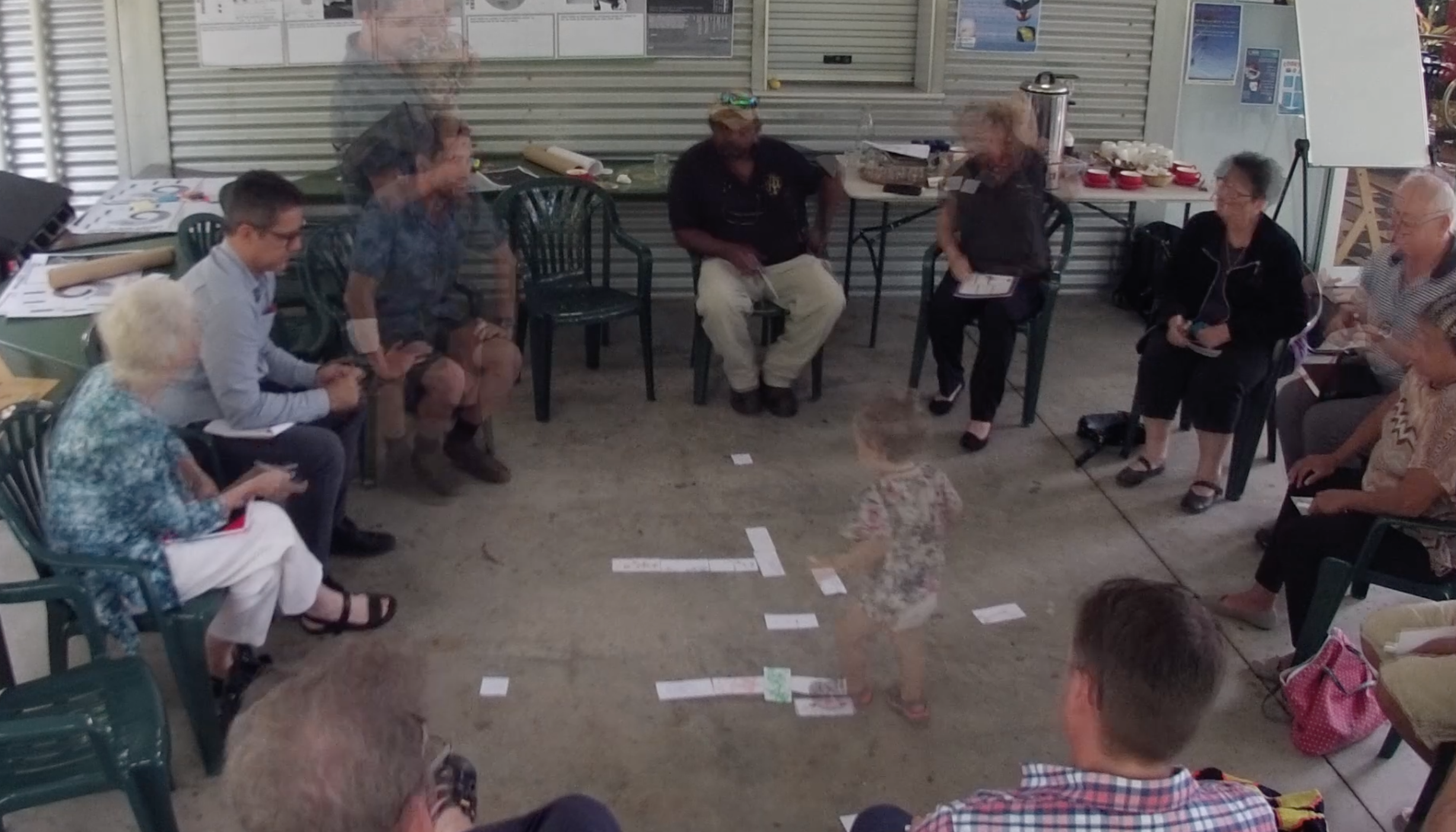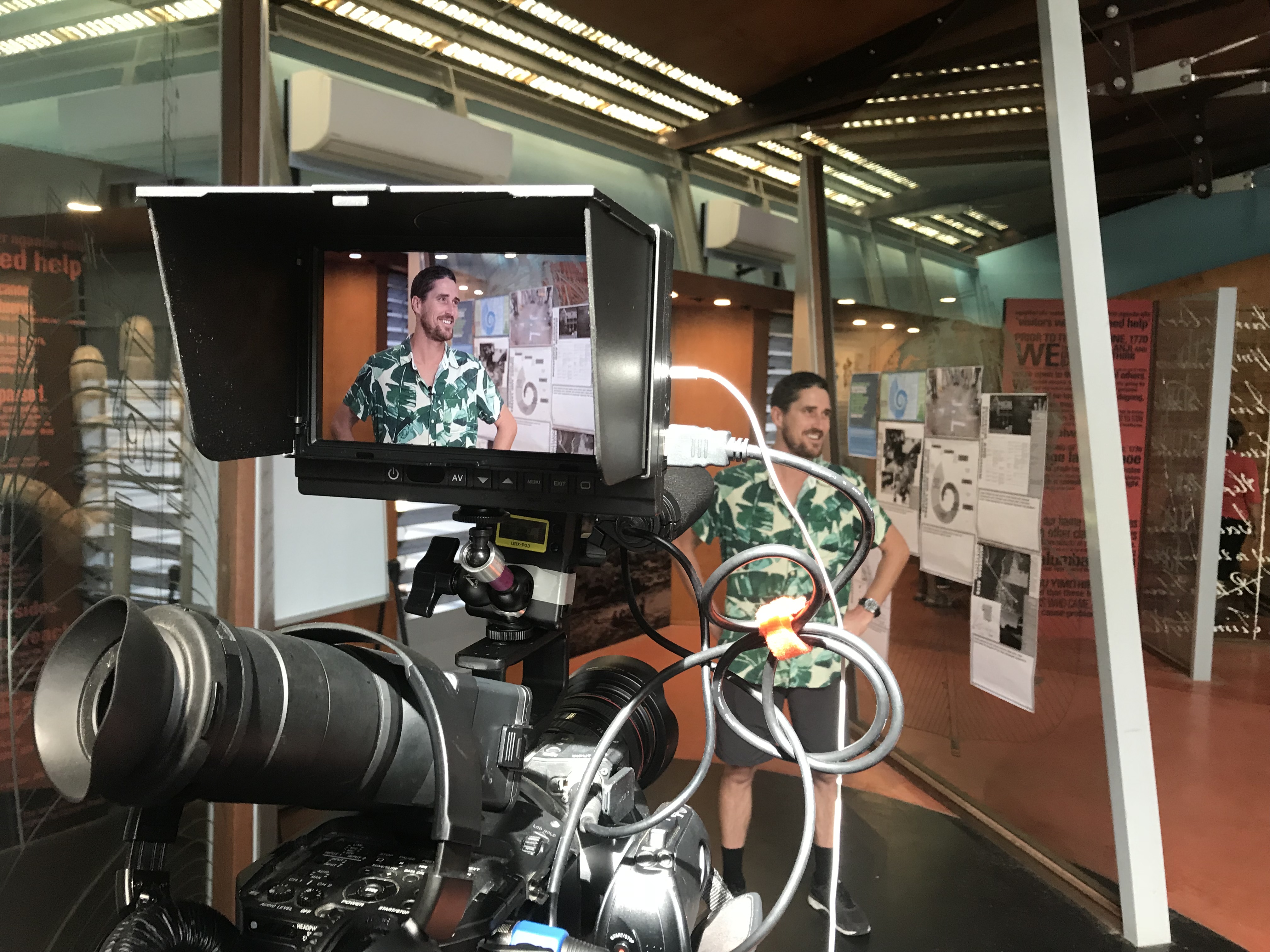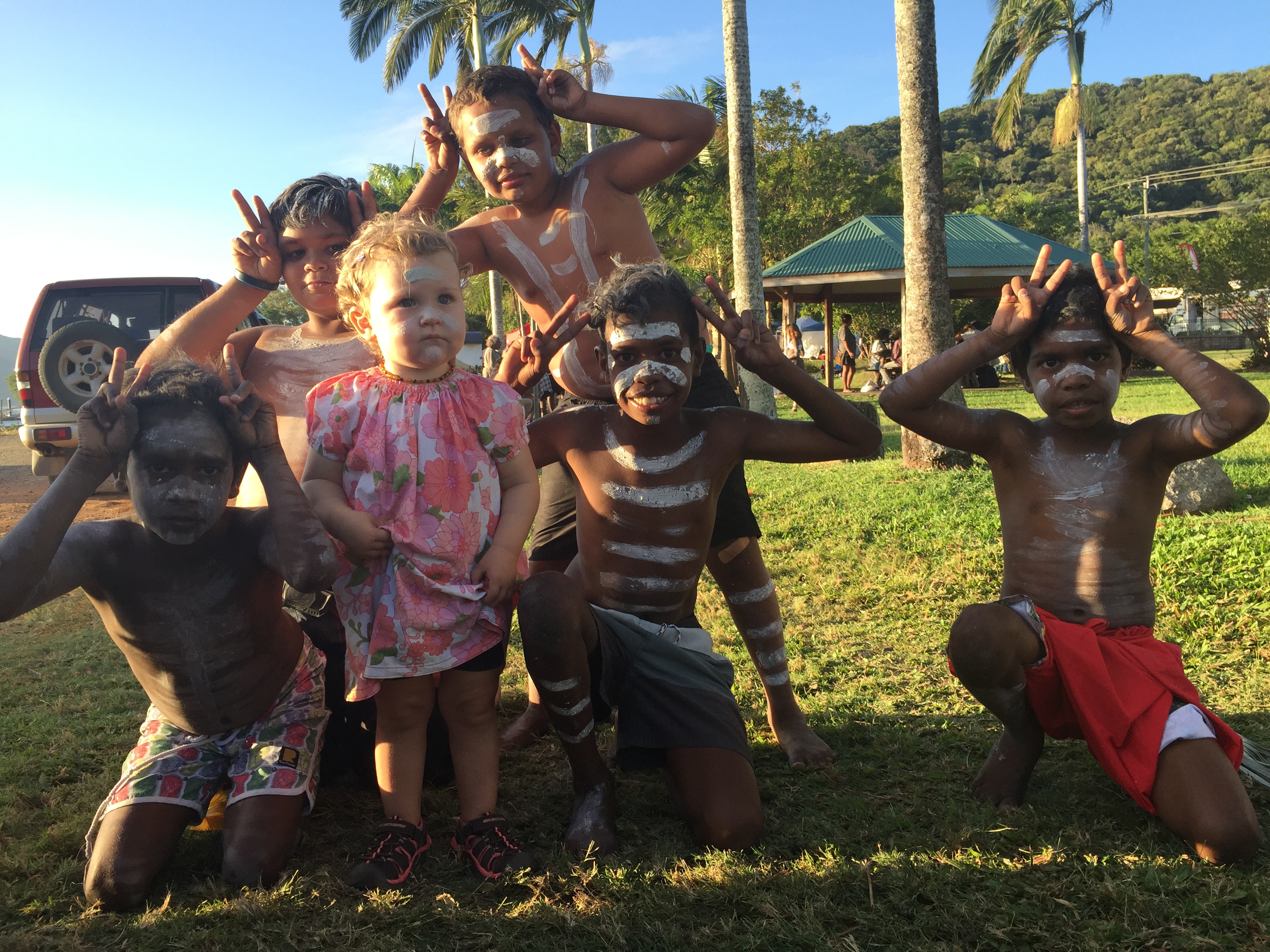Listening and co-designing with Guugu Yimithirr peoples to rewrite the Cooktown story and reimagine the James Cook Museum.

How might we respectfully collaborate with community to reimagine James Cook Museum, its place in Cooktown, the 2020 Endeavour Voyage Anniversary and beyond?
Background
In 2018 the National Trust of Australia, Queensland (NTAQ) engaged Relative Creative to design and lead community engagement with local Bama (Guugu Yimidhirr) as part of their broader project to redevelop James Cook Museum for the 21st Century. As the project progressed we were engaged further to develop place identity and a brand strategy for the museum, as well as the design and interpretation of the museum’s exhibits. Installation of some museum exhibits, along with the museum’s rebranding to Cooktown Museum, commenced at the end of 2021, with ongoing design of additonal museum exhibits.
Opportunity for futures
An important and significant part of the Cooktown Museum project was to consider new, exciting and respectful ways to reimagine the way Aboriginal cultures, with a specific focus on the Guugu Yimidhirr nation, are understood and experienced in and around the building and grounds.
Our approach
Relative Creative began conversations in June and July 2018 with the Cooktown community and continued community engagements over 2019 and January 2020. To foster respectful and relational Indigenous Knowledge production, we drew on and adapted Norm Sheehan’s method of ‘connective art’ in a yarning session with a range of local community members, including Bama-ngay (Guugu Yimidhirr).
Key considerations that emerged included:
- Respectfully weaving together the many different stories and perspectives of Cooktown;
- Celebrating the knowledge, culture, history and continued presence of the Guugu Yimidhirr peoples;
- Taking visitors on a journey through the histories of Cooktown and the museum.
These engagements were captured in a series of internal reports to provide NTAQ and community with an overview of our ongoing engagement. Outcomes of the engagements, as well as typologies and thematics of place, and extensive visual studies contributed to the development of a Visitor Experience Plan, Concept Framework document and eventually the development of an updated identity.
We commend the National Trust of Australia, Queensland for providing the space, funds and continued trust to make this project possible and are grateful to all of the locals who have contributed their knowledge and lived experience to the project, notably Aunty Alberta Hornsby and Harold Ludwick.

